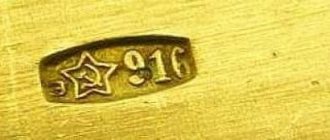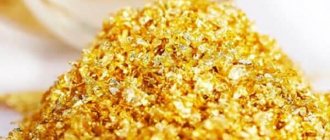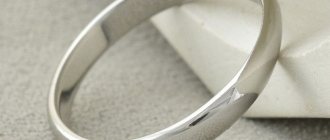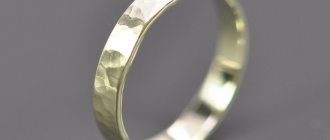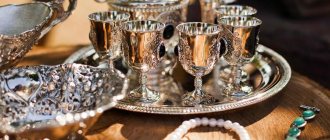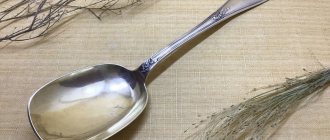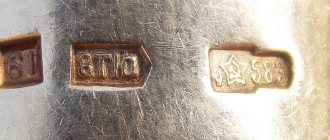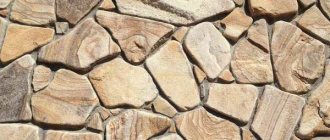It is believed that gold is the first metal with which man became acquainted in history. It is not surprising, since the main method of its extraction is to search for ore in its native state. This noble yellow metal is used not only as jewelry. The domes of churches and crosses playing in the sun, the decoration of majestic icons, the decoration of external elements of buildings, as well as the framing of high-status furniture and other interior items - the technology of gilding the surface with gold leaf is most often used.
Susal - what does it mean: origin, definition of the word and its meaning
Gold leaf - what few people know, since its widespread use in the modern world began relatively recently. Metal is the thinnest sheets that can be used to coat different materials, creating a gilded effect.
The first mention of this material was discovered several thousand years ago in China. The popularity of this type of gold is due to its easy production. The metal's natural softness and malleability made it easy to cast into thin, continuous sheets.
Gold paper for decoration
Next, the ancient peoples of Egypt, India, and Greece learned about metal and its use. Already in the 10th century, tinsel began to be produced in Rus'. At that time, working with this type of gold was a separate craft, which was used in interior decoration, many household items, and architecture.
The name gold leaf comes from the ancient Russian word susal (translated as face), since such sheets were used to cover exclusively the front side of various objects.
Gilding tinsel
The technology of gilding with tinsel is based on one unusual property of gold: metal, rolled to a very small thickness, adheres to smooth surfaces at the molecular level. Coating a product with tinsel is a complex process, since working with the thinnest sheets of precious metal requires attention and accuracy. Casting a product from gold is much easier than covering the same product with tinsel.
This unusual property allows gold leaf to be used to decorate church domes, statues, fountain compositions, as well as pieces of furniture used to create a luxurious environment. The technology of applying material has changed throughout human history. Now tinsel is used as packaging for expensive sweets and even as an ingredient in coffee and cocktail drinks.
Among the methods of gilding with tinsel, experts distinguish two options: attaching the precious metal to polyment and to mordan. What is their difference? Polyment is a kind of base on which sheets of tinsel are attached. The composition of the polyment is based on clay, to which soap, white beeswax and whale oil are added in small quantities. The peculiarity of this method of gilding can be considered the final result: the surface takes on the appearance of real gold and looks as if it were made of metal. Attaching tinsel to polyment requires large financial and labor costs, so it is used in cases where it is necessary to treat a surface that is not exposed to the external environment. Most often, furniture is gilded this way.
What is a leaf coating on a mordan? This treatment of the product with gold allows you to give its surface a matte effect. To carry out the procedure, materials based on vegetable oils are used; Mordan varnish itself is prepared from flax and hemp oil with the addition of special components. In this case, treating the surface with tinsel is easier and faster. Mounting on the face allows you to decorate a variety of surfaces, including wood, plaster, and marble.
Before gilding the face, the surface of the product is primed with cinnabar and then wiped with cloth to remove irregularities. The prepared part is covered with mordan and dried for the required time. Depending on the variety of Mordan, drying can last from several hours to a whole day. Before applying the tinsel, the master checks the surface for “tack-free” conditions. It is very important here not to dry the mordan completely, since gold will not stick well to a dry surface. Undried mordan is also not suitable for gilding with gold leaf, since the sheets of material will sink in it. Considering the value of gold, all work should be carried out strictly according to technology and very carefully.
Leaf sheets: type and thickness
Gold leaf, the composition of which varies only due to the ratio of the proportion of base metal to the proportion of impurities, can have several shades: pale yellow, white, reddish, orange, greenish. This variety is also achieved by adding small amounts of cadmium, palladium, and nickel. Gold leaf is very thin, its thickness does not exceed 0.5 microns. Most often, sheet material is used for finishing household products and paintings. Recently, it has begun to be used in the beauty industry and medicine.
Leaf sheets of different types
Gold leaf standards, composition: European and Russian, chemical formula
For the production of domestic and imported gold leaf, the same formula is used. But the standards and legal requirements for the manufacturing process differ, without which the product is not allowed to be sold.
The Russian standard is indicated by the symbols RS. The product is manufactured in accordance with GOST, which clearly states the composition, quantity of components and sample. The tinsel is in the form of books with 60 sheets.
A European product contains the EU mark, which indicates the foreign origin of the product. The law stipulates that precious books must have 25 sheets measuring 80x80mm.
The chemical formula remains the same regardless of the manufacturer. Leaf alloy includes the following components:
- gold;
- silver;
- copper;
- aluminum;
- zinc.
Fake gold leaf
Leaf consists almost entirely of pure noble metal and the cost of such a coating is quite high. As a result, real expensive precious metals began to be replaced with cheaper analogues.
Application of gold leaf
Existing types of substitutes:
- Double - distinguished by a large amount of silver in the composition. Gold is layered on silver.
- Talma - a layer of leaf is layered on copper.
- Potal - this method allows you to imitate gold plating without adding precious metals. Copper and aluminum (sometimes copper and zinc) are used to make it. Additionally, it is necessary to use a layer of varnish to protect the coating from corrosive destruction.
- Mousse gold (tin sulfide) is a method of creating a gilding effect using metallic paint. This special alloy contains a mixture of sulfur and tin, without the addition of noble metals.
- Titanium nitride - allows you to make the gold-plated coating durable and well protected from external factors. Using nitrogen, you can slightly change the tone of the gilding.
- Gold-plated foil is used relatively recently. The composition contains copper, nickel and cobalt.
Gold leaf plating: from A to Z
Gold leaf is the thinnest sheets of gold of the highest standard, applied to the surface of items being restored or decorated. This type of gilding is very popular in the restoration and restoration of interiors and exteriors. The classic and noble technique of gilding with leaf was invented a long time ago.
To be precise - 1700 years ago. Nowadays, this technology has been somewhat modified, but has not lost its popularity and is widely used in interior decoration and restoration of antique objects.
This method of restoration and decoration is quite expensive, because real precious metal is used for gilding.
What is gold leaf made from?
Thin sheets of tinsel are made from gold of the highest standard. Depending on the application and to impart the necessary properties and shade, various metals can be added to gold leaf: silver, aluminum, copper and others.
The shade of gold leaf is chosen depending on the ideas of the restorers and the wishes of the customer. For example, an alloy with copper is used to give a red tint. To obtain a greenish tint, an alloy with silver is used.
The main advantages of using gilding leaf:
- real gold is used;
- gives the product or interior an expensive and unusual appearance;
- does not oxidize;
- does not fade;
- does not lose its properties over the years.
Original and “gold substitute”
Gold leaf - 96-carat gold is made by forging and placed in books of 10 and 60 sheets. The sheets are very thin and measured in microns, so gold leaf is distinguished by the weight of the book. Requires careful and correct surface treatment and extensive experience as a gilder-restorer.
Cheap and cheerful
Potal (hype) is metal foil or a substitute for gold leaf. It is made from inexpensive metals, so it is cheap. One sheet of hype is several times thicker than the original gold leaf. This simplifies the work of the gilder and does not require high qualifications. Books of 25-30 sheets.
Technologies for applying gold leaf in restoration.
Depending on the material of the surface being treated and its location (interior/exterior), three main gilding methods are used:
- Oil,
- Glue,
- Polymental.
Oil gilding. Used for the restoration and restoration of objects exposed to atmospheric influences. These are church domes, grilles, fences, roofing. Material requirements: metal, plaster, papier-mâché, wood, glass, porcelain.
First of all, clean the drawing and prepare the surface, puttingty on defects in the form of depressions, crevices, cracks and scratches. After thorough drying, clean the putty. Next, depending on the grain size and porosity of the surface, several layers of primer are applied, at least three layers.
The primer can be tinted in different colors to give the desired shade of gold. When the soil has dried, it is treated with sandpaper and the pattern is cleaned. The next stage is 6 to 10 layers of varnish, with sanding after every 2 or 3 layers. This is followed by polishing the surface to a shine and coating with oil varnish. The last stage is covering the restored surface with gold leaf or gold leaf.
The use of oil gilding technology allows you to obtain different types of gilding - matte, matte velvety, grain-like and glossy gilding.
Adhesive gilding. It is used in the restoration of interiors and furnishings, mainly for gilding wooden products. Adhesive gilding is also used for the restoration of plaster and papier-mâché.
By analogy with oil gilding, first prepare the surface and clean the ornament pattern, filling large depressions, crevices, cracks, and scratches with putty. Next, on the dried surface, the putty is cleaned and hide glue is applied to it.
Afterwards, they are covered with gesso – a mixture consisting of glue and chalk. Apply about 9 layers with intermediate sanding and cleaning of the ornament. The last layer is treated with fine sandpaper and polished.
Places of gilding are moistened with vodka or alcohol diluted to approximately 25 degrees, and sheets of gold leaf are carefully applied. Carefully sweep the dried surface with a soft brush, removing excess. When using adhesive gilding technology, the gold becomes matte. However, using other adhesives, you can get gloss.
The process of making leaf sheets
To obtain tinsel sheets you need regular gold. The precious ingot is heated, shaped into a cylindrical shape, and then cut into small circles. Each piece obtained is a future leaf leaf. Each circle is separated from the other by a piece of paper.
The entire ingot cut into pieces is collected in a stack, which is placed under an automatic hammer. From the force of blows with a hammer, the pieces gradually turn into cakes of the required thickness. Based on the number of elements, the hammer can deliver up to 2 thousand blows. The resulting sheet is cut into a square shape, forming a book.
It is worth saying that for production of 20 sq.m. For tinsel, it is enough to use a little more than 1 gram of noble metal.
Manufacturing technology
The production of tinsel has been known for thousands of years. In China, in the Lon Tan province, it has been produced for more than 1,700 years. In Russia, famous goldsmiths have long worked in the city of Poshekhonye, Yaroslavl region. Unfortunately, leaf foil is not currently produced there, and its secrets have been lost.
The production of the thinnest sheets of gold is possible due to the fact that this metal is extremely malleable and soft, amenable to flattening. The production process is labor intensive. It occurs in several stages:
- A block measuring 20x5x1 cm is cast.
- Roll it out into a strip 30 m long.
- The strip is cut into squares and collected in piles, interlaced with paper. Each contains from 100 to 300 sheets of gold.
- The stacks are placed under the hammer where they are struck more than 2,000 times. Each square is flattened into a circle a fraction of a micron thick.
- Squares are cut out from the circles and put into a book.
The most difficult part is the beating. To obtain sheets of equal thickness, without thickening or knocked-out areas, hammer blows must be applied with a given force and in a certain sequence.
In former times, when making gold sheets, a master could only rely on his own skill and eye. Since ancient times, many secrets have been developed to make work easier. So, for the squares they made a special frame from beef liver chaff or intestines, which the master hit with a hammer. Each book took several days to produce.
In modern production, animal entrails are not used, they are replaced by high-tech plastics. The process is automated and the production cycle takes place within 10 hours . Currently, there are 3 methods of beating gold:
- Completely manual (historical), where the hammer striker hits the stack with a hammer, relying on his own eye. In this way it is difficult to obtain sheets of uniform thickness and books of the same weight.
- The stack is processed with an automatic hammer, which delivers blows of equal force. The master manually moves the stack under the hammer.
- Production is fully automated. The blows are delivered by an automatic hammer, and the movement of the stack is controlled by a computer program. This method allows you to obtain sheets of maximum accuracy and high quality. With the help of industrial robots, gold foil is produced in Italy and Germany.
Making gold leaf at home is extremely difficult. To obtain it, some craftsmen roll gold bars on special mechanical or manual jewelry rollers, then beat them with a hammer. This process is very labor-intensive and does not always make it possible to produce a product of the required thickness. In this way, foil is made up to 1 micron thick.
Cost of gold leaf
It is impossible to say exactly how much tinsel costs. Manufacturing plants set prices based on their own production and delivery costs. Initially, the price of pure gold is formed on the London Stock Exchange. The cost of alloys of other samples, for example 960, depends on this figure. And that means tinsel in any form.
Potal gold leaf
Advantages of gilding leaf
Gold leaf gilding on a mordan is a labor-intensive and time-consuming process. But the result justifies all the time and money spent.
Advantages of the technology:
- Versatility. The technique is suitable for products made of metal, polymers, gypsum, stone, and is used in painting ceilings, decorating icon cases, in architecture and small architectural forms.
- Durability. The plasticity and chemical neutrality of pure gold prevents cracking of the coating in the cold, adsorption of substances from the atmosphere and surface contamination.
- Functionality. Mordal gilding not only gives beauty, but also provides anti-corrosion resistance and protects the base from negative influences.
The price of gilding leaf is calculated per m2 and depends on several factors. This is the size of the object or coverage area, the presence of complex elements, carved parts, reliefs.
implements projects of any complexity - from the manufacture of large structures from scratch to restoration. The cost of gilding with gold leaf is recouped.
Gold leaf stamps
Manufacturers now offer a large selection of multi-purpose leaf coatings. Also, many foreign suppliers offer their products for ordering via the Internet with delivery to Lipetsk, Ufa, Minsk, Samara, St. Petersburg and other remote points of Russia.
German leaf coating Noris
One of the most famous producers of tinsel is the German company Noris. It supplies precious products to Russia and offers a wide selection for ordering through its online store.
Pure Palladium Noris
Pure palladium from the Noris company is produced in the form of a book of 25 pages measuring 80x80mm. This coating is easily polished and protects the surface from corrosive destruction, but is intended only for interior decoration. The price of such a product is up to 3 thousand rubles.
Areas of application of gold leaf
In the modern world, tinsel is still popular and is used in many areas of human activity:
- with its help, electrical circuits are covered: good electrical conductivity significantly extends the service life of many devices;
- gold is actively used by cosmetologists for anti-aging procedures;
- the precious metal is an officially recognized additive used in culinary masterpieces around the world;
- golden glitter is actively used in architecture, for processing three-dimensional objects;
- This coating allows you to focus on individual interior items.
Application of gold leaf
Restoration of icons and paintings
It has long been customary to use tinsel for finishing paintings, icons, and in painting. In this way the artist made his creation unique and luxurious. As a prime example, Leonardo Da Vinci used tinsel to cover his own paintings to protect them from dust, humidity and other damage.
Susal in cooking, food additive E175
Recently, it has become increasingly popular to use gold leaf in cooking. In many countries of the world it is a food additive, which is designated E175 on the packaging. Food with this ingredient is served by elite chefs in expensive restaurants around the world. Precious leaves are used to decorate cakes, sweets, desserts, ice cream, pastries, sushi and even meat dishes. Often tinsel is added to alcoholic, non-alcoholic drinks, and coffee. This supplement is edible and safe for consumption.
It has been proven that gold, when entering the human body, is not capable of causing harm and is excreted unchanged.
Cosmetology
In recent years, tinsel has become an integral part of cosmetic procedures and products. Experts are convinced that its chemical composition can have a certain effect on the epidermis, preserving the beauty and youth of the skin. Using sheets of leaf material, wraps are made for the face and other parts of the body. The procedure has gained popularity among people with various dermatological problems, since it is believed that gold, along with herbs and other components, can improve the condition of the skin in general.
Areas of application and price
The scope of application of embossed gold leaf has expanded significantly today. The domes of Kievan Rus were covered with fire gilding; many craftsmen died from toxic mercury vapors. Today, church domes are gilded using safe methods. For external work, sheets of greater thickness are used.
To decorate interiors and furniture, thinner gold sheets are used. One book weighing 1.25 g costs about 5,000 rubles. Covering a gilded surface of 1 m2 will cost 15-16 thousand rubles.
In electronics, tinsel is used to cover some parts of the circuit. Due to the high electrical conductivity of the precious metal, the service life of the device is extended. The thinnest tinsel is used in cosmetology and cooking. The gold additive has its own designation - E-175.
Doctors recommend taking it to improve blood circulation.
I think that the very awareness of such an ingredient in food has a very beneficial effect on the functioning of all internal organs. Experts talk about a beneficial effect on the digestion and respiratory system.
Reference! In Japan, they can serve coffee sprinkled with gold, similar to cinnamon. In some countries, spirits containing precious metal are produced. The Indians have gone the furthest - they pack sweets in gold foil.
Special tools for manipulating gold sheets
Using gold sheets for domestic purposes is a rather complicated process that requires some skills and knowledge. Any thoughtless action can affect the outcome of the work. The first and main rule that is worth remembering is that the tinsel should not be touched with your hands. The thickness of the sheets is only a few microns, they tear and deteriorate extremely quickly. Special equipment must be used:
- a suede pillow - only on it you can carefully cut the sheets and peel off the gold from the paper;
- metal knife - a specialized tool with a special shape and an extremely sharp blade;
- lampenzel - is a special brush with a wide flat surface designed for carrying gold material;
- agate is a natural stone used for final polishing of the surface. It is used to produce specialized instruments with a smooth tip and handle.
Gold leaf
Modern production technologies
Today, leaf material is produced using electronic machines. The entire manufacturing cycle lasts up to 10 hours. Human participation is limited only to remote control of machines and machines.
The sheet is then rolled, cut into squares and flattened in a stack with a hammer to the thickness of regular paper. The metal sheets obtained in this way are covered with plastic and pressed again to the desired thickness.
Kinds
Leaf today can be in the form of free gold and stencil sheet. Screen tinsel is applied by craftsmen onto white silk paper. After gilding, the paper is removed. Free gold is applied to the surface with special squirrel hair brushes. Working with such material is very painstaking.
In the production of gold leaf, two types of standards are used. The material of the Russian standard is collected in a book of 300 sheets, the size of each sheet is 91.5 × 91.5 mm. It weighs 5 g. The European standard is designed for 25 sheets in a book. Sheet size 80×80 mm. Books may be of different types.
Rules for applying tinsel
The definition of tinsel itself suggests that the sheets are used for gilding surfaces. The whole process consists of the following stages:
- The surface is covered with gesso primer in 3 layers. The first layer is the thinnest, the rest are a little thicker. There should be at least an hour between each application. After applying the last layer, the surface must dry for more than 6 hours.
- The prepared surface is polished. Abrasive sheets are used for this.
- Next, the primer is covered with a layer of shellac, which is applied with a brush. Allow the layer to dry thoroughly.
- Sand the product again with paper using P600 abrasive.
- Next, you can proceed to the process of applying gilding. The tinsel is cut into pieces of the required sizes. The surface is wiped with a mixture of water and alcohol, onto which the sheets are actually glued. When the gold sticks tightly to the surface, it begins to be polished. In some cases, the water-alcohol solution is replaced with professional glue.
How surfaces are finished with gilding
Today, two methods of applying leaf sheets are used. Depending on the materials used and nuances in the technique, different results are obtained. Oil gilding consists of three stages:
- Applying oil glue to the sanded surface.
- Covering with tinsel (special tools are used).
- Applying a second layer of glue to secure the result.
This treatment produces matte gold plating. It is not afraid of moisture and does not crack during temperature fluctuations.
Glue gilding is more complex and closer to the work of ancient masters:
- Primer is applied to the polished surface in layers.
- Then the adhesive composition of the polyment is applied.
- Gesso, white primer for gilding.
- The process is completed by applying and processing tinsel.
A video of the filmed process will give a complete idea of what painstaking and beautiful work this is.
Rules for choosing gold leaf
Almost all manufacturers use the same technology to produce leaf material. The only difference is the surface area covered. To choose the right material for gilding, it is important to pay attention to the following points:
- Each manufacturer indicates for what purposes it is recommended to use tinsel. If it is intended for the food industry, it cannot be used for finishing work. Different materials are also used to cover smooth and rough surfaces.
- When decorating outdoors, it is better to choose a brand designed for outdoor use. This material is more resistant to weather conditions and better protects objects from corrosive destruction.
- It is best to give preference to well-known manufacturers who guarantee product quality. In addition, when purchasing large volumes, manufacturers always offer discounts to their customers.
Gold leaf in bottles
How is this gold made?
Gold leaf is interesting not only because you can make beautiful things from it, but also because of its properties. Due to the fact that the metal layer is so thick, which is about 100 nanometers, gold leaf adheres to any surface at the molecular level.
Now the process of manufacturing such material occurs with the help of the most modern technologies and a computer, but not so long ago it was done manually. On an anvil, a piece of gold was forged into wire, and then into a plate 2-3 mm thick. Then such a plate was cut into squares and laid out with tissue paper sheets.
A special frame was made from the chaff of beef liver and a stack of squares was placed there, and the master hit this stack several thousand times, depending on the further use of the material. Thicker material was used for exterior work, while less thick material was used to cover icons.
Now the process of creating gold leaf looks different. A piece of gold is placed in a furnace heated to the required temperature, and then rolled in a rolling mill. A 50-meter ribbon is made from gold, which is cut into squares and folded. The squares are beaten with a smooth electric hammer on a granite slab.
After 20 minutes, the thickness of the squares is reduced by 4 times, after which they are cut again. At this stage, the gold is the thickness of a sheet of paper. Such sheets are again stacked and placed with ox intestines, pressed, dried and beaten again. The process takes about 5 hours.
Gold leaf is sold in two main varieties: loose and fixed. Loose leaf is the most popular and is suitable for most applications. It is removed from the book with wooden tweezers or a special brush.
Storage of gold leaf
Another form is the fixed, or patent, sheet. It is attached to specially prepared wax paper. Such pieces of paper are placed in special books, from where you can take out each piece of paper separately and apply it to a pre-prepared sticky surface. This type of gold leaf can only be used to cover flat surfaces.
Reviews
Recently they covered old icons with gold leaf. We purchased 10 sheets of European products, which cost about 2 thousand rubles. Sheets measuring 80x80mm correspond to 23 carats. They are easy to work with and provide a durable protective coating for wood frames.
Genady R., Sevastopol
Nikolay L., Moscow
Having been involved in professional interior decoration, I can say that now it is much more profitable to use special paint, which creates the effect of natural gilding and is valued no less than precious tinsel. This coating performs the same functions, but costs significantly less. In addition, it is much easier to work with.
I have been practicing cosmetology for many years and gradually clients themselves began to become interested in procedures with gold. Then I learned about tinsel, which has a rejuvenating effect on the skin. I still don’t understand how it works, but I use procedures with gold leaves more and more often. Now I’m experimenting with products from different manufacturers, although so far they differ only in the cost of the sheets.
Liliya G., Moscow
